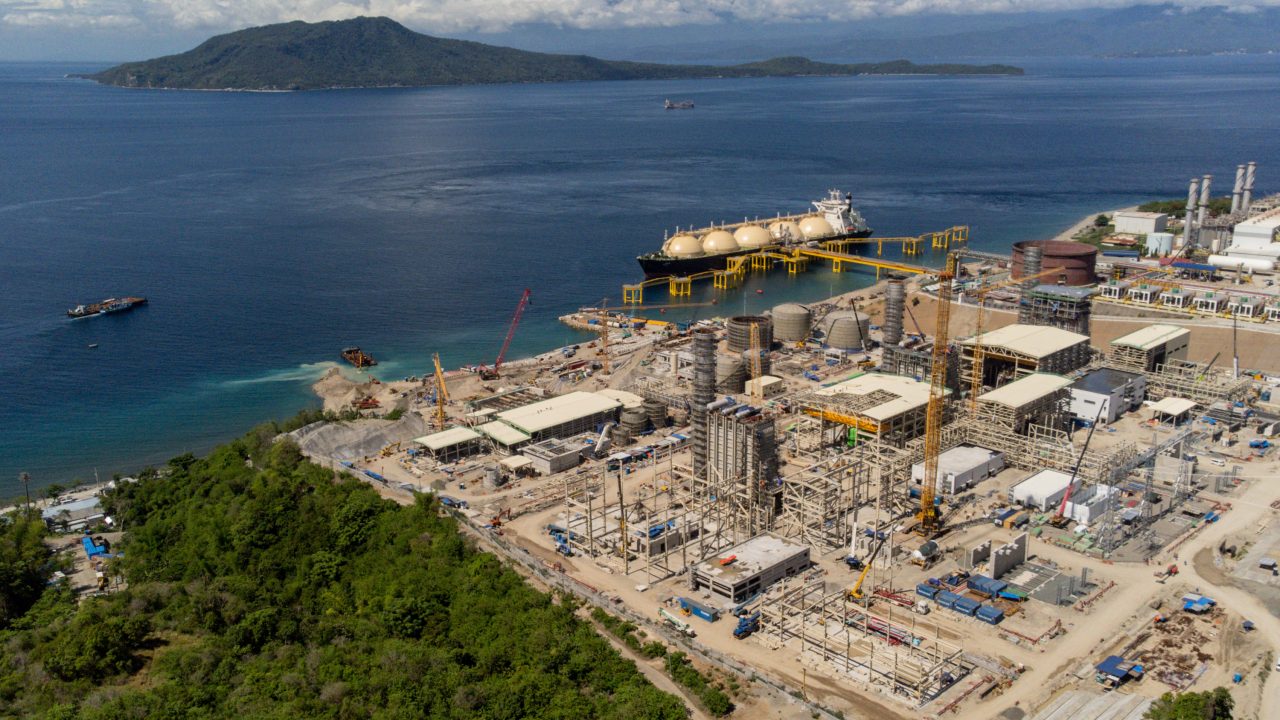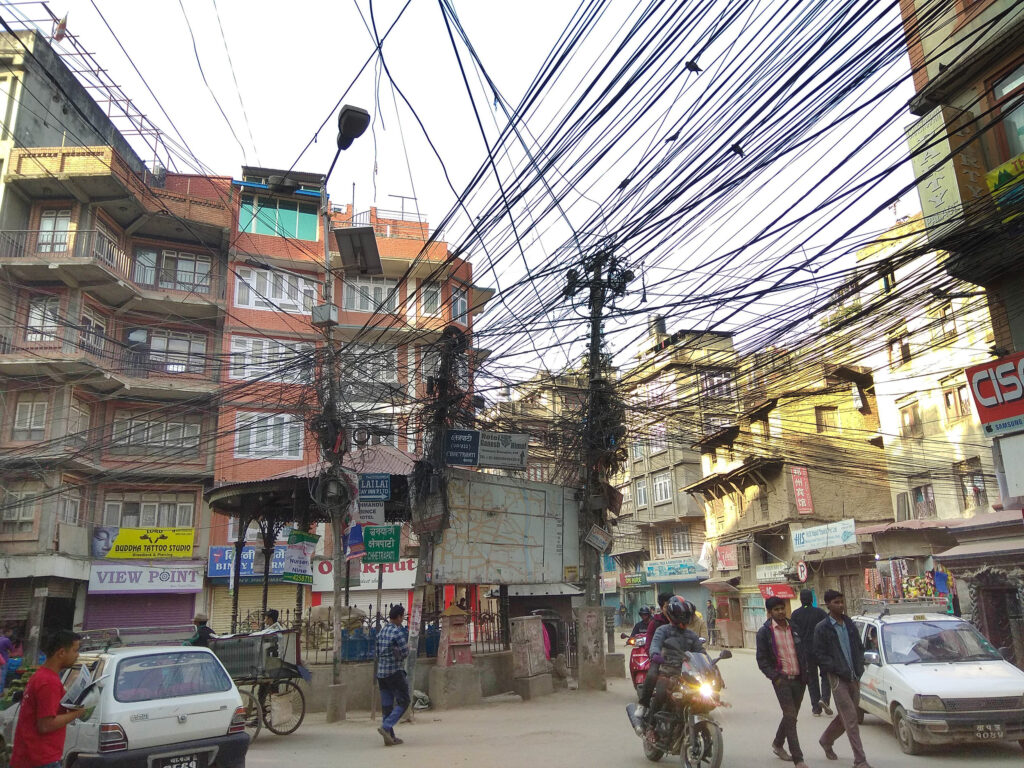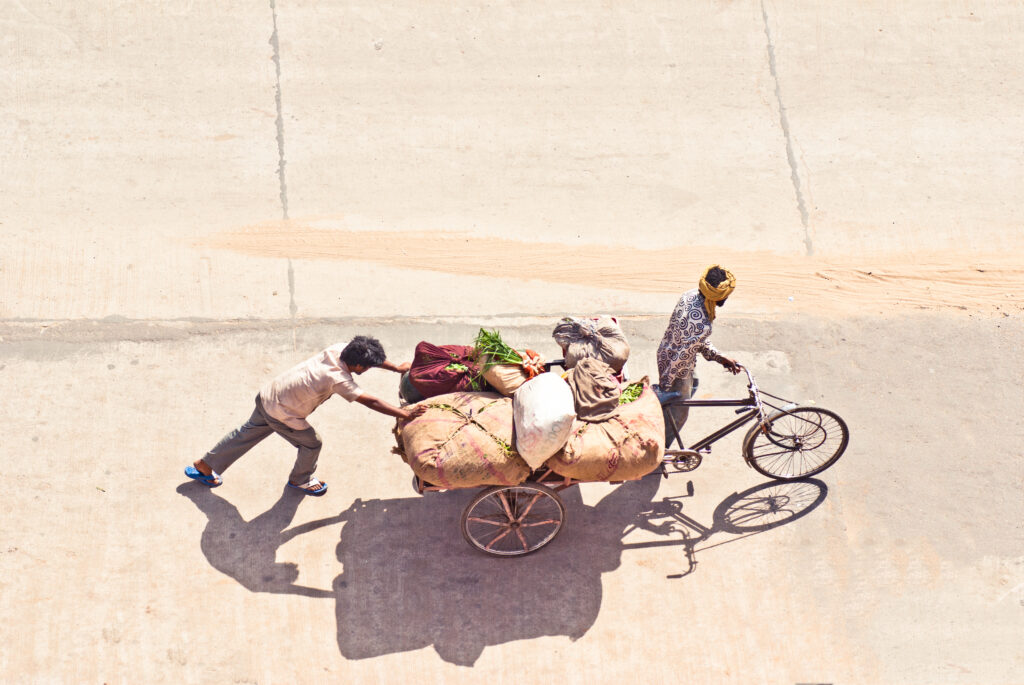Are Asia’s LNG projects ruining the nature?
The vivid blues and greens of the Napoleon wrasse blend strikingly with the vibrant colours of the Verde Island Passage’s (VIP) coral reefs in what is a living masterpiece of nature’s deep sea artistry. But as the fish glide gracefully, a distant, muted rumble starts distorting the blissful picture. The sharp whir of drills and the relentless pounding of steel get louder. A jarry symphony of heavy machinery overtakes the serene underwater world – the result of a project for nine new gas-fired power plants and four LNG import terminals in the area of the VIP, one of the most important habitats on Earth.
For thousands of years, over 1,700 fish and 300 coral species, many of which are endemic to the area and now endangered, have been living together in this thriving ecosystem. The “Amazon of the oceans,” “the centre of global shorefish biodiversity” and the “place with more species of soft corals than in all of the Caribbean,” as the VIP is known, is no longer just a hotspot of biodiversity, but the heart of Southeast Asia’s expanding oil and gas industry. The LNG facility threatening the natural ecosystems of the VIP and the communities relying on them is just one of the 143 similar LNG import terminals in development across Asia.
As the voices of affected communities and eco and climate activists become louder, Asian governments and gas development companies should reconsider their strategies, adopting stricter regulations to protect biodiversity hotspots and focus on the responsible construction of renewable energy capacity.
The Impact of Asia’s LNG Projects
Global Energy Monitor’s “Southeast Asia’s Energy Crossroads” report finds that current gas expansion plans would double the region’s gas-fired power capacity. Furthermore, it will lead to an 80% increase in its LNG import capacity.
The region is also a hotbed for oil and gas extraction, with most of the projects in the waters of the South China Sea between Vietnam, Malaysia and the Philippines.
Vietnam, the Philippines, Indonesia, Malaysia and Thailand are leading Asia’s gas expansion push, with over 100 GW of power capacity, 47 million tonnes per annum (mtpa) of LNG import and 16.7 mtpa of LNG export capacity in development.
In total, the region’s massive development plans include 377 GW of gas plants, 143 LNG terminals, 40 gas extraction areas and 98,000 km of gas pipelines.
Building these projects requires over USD 220 billion in capital and will lock the region into long-term LNG dependence and expensive power. If the developments come to fruition, they will drive a surge in carbon and methane emissions, accelerate global warming and push the region further away from its climate goals. Furthermore, the likely environmental destruction from their construction – decimating marine ecosystems, displacing vulnerable species, and polluting vital habitats – will have lasting, irreparable impacts on biodiversity, according to scientists. Coral reefs, essential for protecting coastlines and supporting marine life, will be among the hardest hit, potentially triggering a collapse of entire ecosystems that millions of people and species rely on for survival.
Disturbed Ecosystems
Over the past 10 years, oceans have experienced their warmest period since the 1800s. As a result, massive coral bleaching events have occurred worldwide, destroying reefs and the natural life they support. Species were forced to migrate from their natural habitats to cooler and deeper waters, disrupting ecological chains and impacting fisheries and the livelihoods of communities. With nature in free fall, habitats shrinking and species disappearing, preserving flora and fauna in the protected areas is more critical than ever.
Yet, according to analysis from research organisations Say No to LNG, Earth Insight and global partners, many of the LNG projects in the pipeline are planned for construction in highly sensitive marine areas, home to diverse and endangered species.
For example, along the coast of the VIP marine corridor, which scientists consider integral for understanding how to preserve global biodiversity, are 144 locally managed marine protected areas abundant with unique marine life. Aside from the significant LNG development plans, a big part of them was also affected during a 900,000 L oil tanker spill in February 2023, which left an over 120 km slick. According to UP Marine Science Institute, the event could have affected approximately 200 square km of coral reefs, 99 square km of mangroves and 60 square km of seagrass.
The VIP lies at the heart of the Coral Triangle, a major reef network that occupies just 1.5% of the world’s total ocean area but represents 30% of the coral reefs on the planet. According to reports by the Centre For Energy, Ecology and Development (CEED), industrial developments in the area have negatively affected coral reef health along the coast. The poor coral cover, ranging between 0.1% to 6.2% across Batangas’ heavily industrialised areas, has, in turn, impacted fish abundance.
In addition, researchers have found elevated concentrations of toxic substances, including metals and chemical compounds, such as phosphate, total copper, lead, chromium and zinc, in the water around the development area. When found in levels above water quality standards, as in this case, these substances pose severe risks to the environment and human health.
These and other environmental issues have been identified as potential risks in the environmental impact study conducted by the project developer.
According to scientists, biodiversity regions and the organisms within them are interconnected, and developments at one site can have a chain-like event, affecting many others.
“It is obvious that the impacts of gas projects are not neatly contained within the formal project boundaries. The damage to seagrass beds, mangroves and coral reefs will impact the success of many valuable species, including whales and dolphins, turtles, dugongs and marine species, which are important food sources for coastal communities. These systems are also valuable protection against severe weather events, which are noticeably more frequent and destructive,” says Anabela Lemos co-author of the Earth Insight report.
On the island of Bali in Indonesia, local communities have also been resisting the construction of a planned LNG terminal threatening to impact Ngurah Rai Grand Forest Park, the widest mangrove ecosystem in the area. According to the World Bank, mangroves are helping Indonesia in many ways, including serving as natural barriers to floods and storms, boosting fishing yields, providing natural habitats to fish and crabs and sequesting an estimated 3.14 billion tonnes of CO2.
In Australia, Woodside, the country’s largest independent oil and gas company, is developing several offshore gas fields beneath pristine coral reefs. Accessing them requires drilling over 50 wells around the Scott Reef system and piping the gas 900 km along the ocean floor. According to an analysis by Samantha Hepburn, director of research at the Deakin Law School, the controversial Browse project has already attracted 800 public appeals and over 400,000 signatures on a petition against it.
In addition, LNG infrastructure buildup is also associated with increased deforestation – a major problem in many Southeast Asian countries. This significantly disturbs habitats, including Indigenous trees and flowers and endemic wildlife species, as in the case of the LNG plant in Barangay Ilijan, Batangas City. Furthermore, native forests store large amounts of “irrecoverable carbon” that, once released by deforestation, can’t be restored quickly enough.
Similar is the case with the Papua LNG project. According to Reclaim Finance, Total Energies’ communication regarding the deforestation process around it is misleading, and the overall ecological impact of the project on such a rich area of biodiversity can’t be compensated.
Adverse Health Impacts and Loss of Livelihoods
Studies have consistently demonstrated that communities near methane-emitting facilities are at an increased risk of developing adverse health conditions. Among them are respiratory and cardiovascular diseases due to air pollutants. People living near locations with LNG infrastructure also have higher incidences of cancer.
Harvard scientists even find that the negative impacts of burning natural gas on human health have surpassed those of coal generation. But burning is just one of the steps in using natural gas for energy. According to studies, gas extraction, storage and distribution are also associated with adverse health impacts due to low air quality and water contamination.
Health impacts aside, gas infrastructure development in coastal areas also affects livelihoods. A case in point is the VIP, which provides food and income to over 2 million people and positively contributes to various industries, such as fisheries, tourism and marine transportation. According to on-the-ground reports, the development of LNG infrastructure in Batangas Bay has caused consistently dwindling fish catch and agricultural production, exacerbating the problem of food security and negatively affecting the source of income of local fisherfolk and marginalised communities.
According to CEED, due to the very high concentrations of toxic metals and substances detected along the coasts of Barangay Ilijan and Dela Paz in Batangas City, the area is no longer fit for boating and fishing.
In Thailand, activists and locals opposed the construction of an LNG plant in Chana, a coastal town in the Songkhla province. The reason is a lack of public consultation with locals whose livelihoods would be affected.
Increased Shipping Intensity and Marine Pollution
LNG infrastructure expansion is associated with intensified marine traffic around terminals and shipping routes. In the case of the LNG projects in the VIP, the CEED finds that if the Batangas EERI Combined Cycle Power Plant U1, 2, 3 and 4 comes online as scheduled, up to 128 LNG tankers could join the annual figures by the end of 2024. If all projects in the pipeline come to life and the LNG demand lives up to forecasts, the figure could rise to 387.
Research reveals that new LNG facilities increase noise pollution in marine migration corridors, mating and nursery areas for species like whales and dolphins. Increased shipping can cause hearing loss and disorientation in whales, dolphins and other animals, reducing their ability to detect approaching vessels and increasing the risk of collision.
As a result, some studies suggest that shipping associated with LNG export terminals has been linked to increased whale deaths caused by collisions and other direct impacts on marine wildlife. Collisions are also common for animals such as sea turtles, spending substantial amounts of time near the surface.
In addition, gas infrastructure in coastal areas increases the risk of spills and marine and air pollution, as seen with the oil spill in the VIP.
High Emissions Further Exacerbating the Climate Crisis
Atmospheric methane levels are 162% above pre-industrial levels. Among the main reasons is the extraction, pumping and transport of fossil fuels, mainly natural gas.
Methane, the main component of LNG, is 80 times more harmful than CO2 over a 20-year period. It is responsible for 30% of the global warming we experience today.
As a result, the International Energy Agency (IEA) has announced that to reach net zero emissions by 2050 and keep the 1.5ºC target Paris Agreement within reach, the world should stop building new oil and gas fields. Furthermore, it adds that cutting methane emissions from fossil fuels by 75% by 2030 is vital. Around 40% of that can come at no cost, the agency adds.
Today, China is the biggest methane emitter of fossil fuels, while the oil and gas developments in South Asia are a leading contributor to the rising global emissions.
The fact that 2023 became the hottest year on record is a painful reminder of the urgency behind the climate crisis. And it is likely to get worse. A study of the views of 380 senior IPCC authors and climate scientists concludes that 77% expect a catastrophic temperature increase of at least 2.5°C. Just 6% think we will limit the temperature rise to 1.5°C
“Humanity’s actions are scorching the Earth. 2023 was a mere preview of the catastrophic future that awaits if we don’t act now. We must respond to record-breaking temperature rises with path-breaking action,” says UN chief António Guterres.
Southeast Asia is among the most exposed regions to climate disasters. Between 2009 and 2019, more than 700 million South Asian people suffered from at least one climate disaster. Often, many of them can’t recover from one weather disaster before another strikes. Going forward, climate catastrophes will start mounting faster than our ability to adapt. Heatwaves over Asia will become more frequent and severe. The region will also shape up as a hotspot of extreme rainfall and increased flood risk.
At the same time, the emissions intensity of Asian economies is 41% higher than the rest of the world. The combination of these two factors means that the priority of Asian countries is to opt against, not in favour of, an accelerated LNG infrastructure buildup to avoid a future of climate calamities. Researchers warn that its expansion comes at a high social and environmental price, stressing many planetary life systems beyond the thresholds they can sustain. In fact, according to the State of Climate Action 2023 report, just one of 42 climate action indicators is on track with the 2030 targets, while some are heading “in the wrong direction entirely.” Without urgent emissions reduction, many regions across Asia will soon reach unlivable conditions, scientists warn.
LNG Projects in Asia: Environmental Concerns
Many LNG projects in Asia’s pipeline are highly polluting. The Papua LNG project alone would increase the country’s annual emissions from the industrial and energy sectors by 7%, releasing over 220 million tonnes of CO2 emissions. The project’s impact equals Bangladesh’s annual emissions.
The environmental concerns are even more significant with the Barossa gas project near the coasts of Australia. Described as “a carbon-dioxide emissions factory, with an LNG by-product,” the plant is likely to emit over 400 million tonnes of GHG emissions over its 25-year lifespan. This is equal to Australia’s total annual emissions. According to the Australia Institute, the plant will produce three times more CO2 than peer gas projects.
Australia’s Barossa project also has controversial social aspects, with a judge ruling that the Indigenous population of the Tiwi Islands in the Timor Sea, where the 262-km Barossa gas pipeline would pass through, hadn’t been properly consulted. First Nations groups lodged a human rights complaint against Australia’s top 20 superannuation funds over their financial support for the Barossa project, urging them to cut ties with Santos, the main shareholder.
Madeleine King, Australia’s resources minister, has previously cited Barossa as an LNG project Australia would bring “to fruition” and has also expressed support for Woodside’s Browse project. The latter is supposed to supply LNG to the Burrup Hub, which would produce twice the emissions of any other fossil fuel project in the pre-approval phase.
Environmentalists and representatives of affected communities have also been protesting against LNG project developers and financiers. Over the years, the efforts of Japan’s government and its export credit agency, Japan Bank for International Cooperation, to advance LNG infrastructure development across Southeast Asia have sparked a series of protests across the Philippines, Indonesia, Thailand, Bangladesh, the United States, Mozambique, Canada and Australia. The fossil fuel expansion plans of Japan’s government have also been strongly criticised by the rest of the G7.
LNG as a Bridge to Climate and Environmental Hardship
The global push for LNG harms the world’s oceans, biodiversity, climate and people. Developing such projects in biodiversity hotspots across Asia is a collective failure of governments, project developers and investors. However, every one of these stakeholders has the power to stop this from happening.
Governments can make areas legally protected, developers can perform more detailed environmental impact assessments or move planned operations elsewhere and investors can halt project funding based on environmental concerns, protecting their reputation in the process.
Without urgent action, the graceful gliding of the Napoleon wrasse and countless other species will be relegated to the pages of history books, and our pristine reefs’ vibrant presence will be lost forever to unchecked oil and gas expansion.
Viktor Tachev
Writer, Bulgaria
Viktor is a writer that specialises in green finance and ESG investment practices. He holds a Master's degree in financial markets and has over a decade of experience working with companies in the finance industry, along with international organisations and NGOs. Viktor is a regular contributor to several publications and comments on the likes of sustainability and renewable energy.
Viktor is a writer that specialises in green finance and ESG investment practices. He holds a Master's degree in financial markets and has over a decade of experience working with companies in the finance industry, along with international organisations and NGOs. Viktor is a regular contributor to several publications and comments on the likes of sustainability and renewable energy.
















